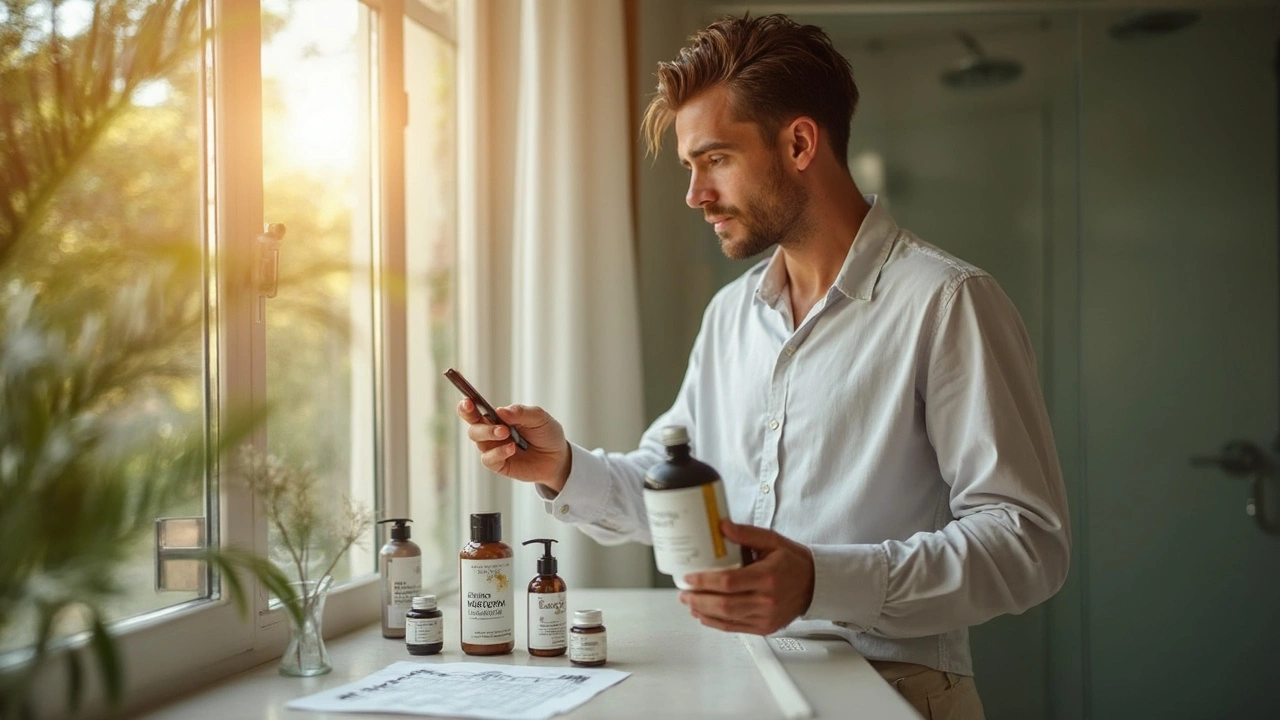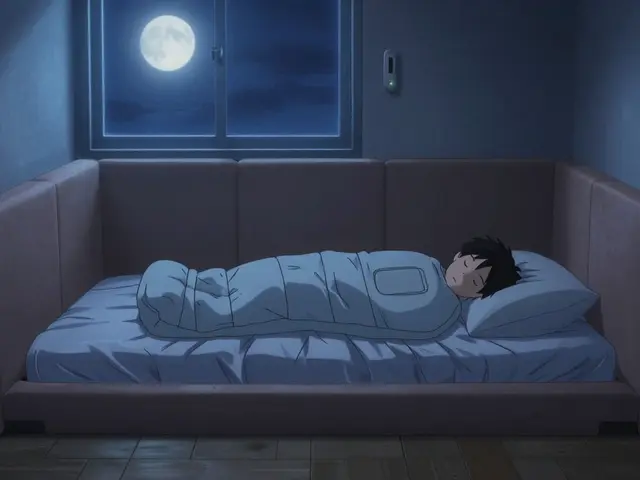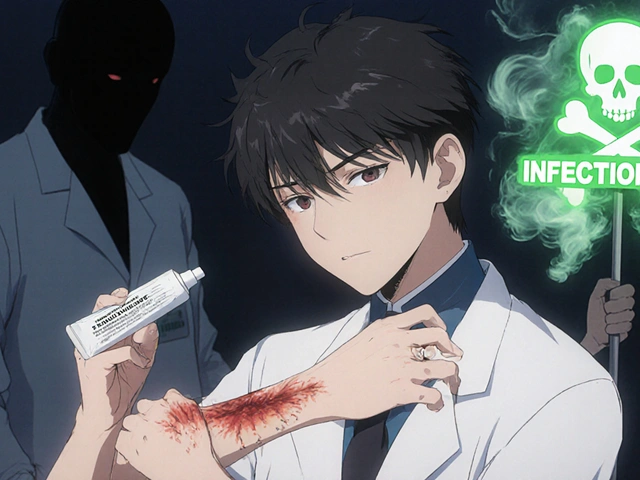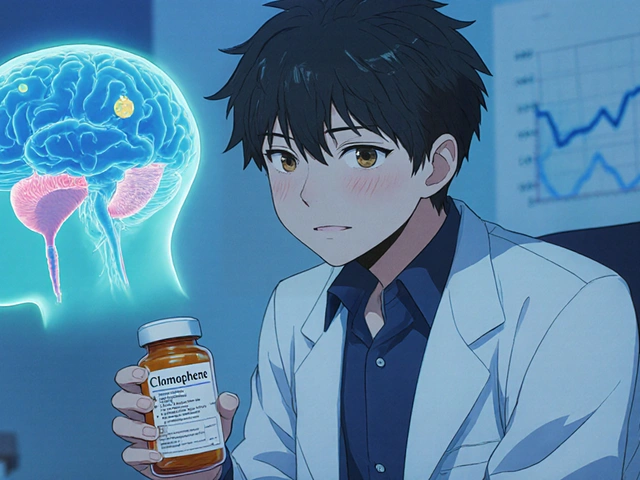Hair loss is like an unwanted guest that barges in without warning and never gets the hint to leave. If you’ve ever stared at your shower drain or caught a glimpse of your widening part, you know the stress. Most people land on Propecia first because it’s popular, but what if that’s not your thing—or doesn’t work for you? Good news: 2025 brings a fresh batch of options, and some old standbys with new science to back them up.
Trying something new can be daunting, especially when it involves your hair. Each alternative to Propecia has its own story—some are easy, some are a little more experimental, but all are buzzing in the world of hair health right now. We’re going to walk through seven popular alternatives, covering how each works, what helps, what might bug you, and some tips to make your choice smoother. Grab your coffee (and maybe a notepad)—because yes, you do have choices, and some of them might surprise you.
- Minoxidil
- Dutasteride
- Finasteride Topical
- Ketoconazole Shampoo
- Low-Level Laser Therapy
- PRP Therapy (Platelet-Rich Plasma)
- Pumpkin Seed Oil
- Biotin Supplements
Minoxidil
If you've Googled hair loss treatments even once, you've stumbled across Minoxidil. It's that topical liquid or foam you rub right onto your scalp—the same active stuff in Rogaine. It’s been around since the '80s, but it’s still hanging on as a Propecia alternative, mainly because it’s backed by decades of research and a ton of real-world use.
Here’s how it works: Minoxidil widens blood vessels in your scalp, which ramps up blood flow to hair follicles. This can help wake up those sleepy follicles and kickstart new hair growth. What’s cool is that you don’t need a prescription for it, and there are different strengths (usually 2% and 5%). The 5% formula tends to work faster, especially for men, but women often use it too.
It’s not an instant fix. If you start using Minoxidil, you’ll need to stick with it for months to see big changes—which can make anyone impatient. Hair shedding at the start actually means it’s working, so don’t freak out if you see a little more hair in the drain the first few weeks. That’s the old hair making way for the new.
Pros
- Available without a prescription—just grab it at your local pharmacy or order online.
- Proven track record, with many users seeing real hair regrowth.
- Works for both men and women—no need for gender-specific versions.
- No hormone tinkering, so fewer sexual side effects compared to Propecia.
- Easy to use—just apply morning and night.
Cons
- Gotta keep using it—if you stop, new hair can vanish faster than you’d hope.
- Results can take 3–6 months, which can feel like forever.
- Potential for scalp irritation, dryness, or flaking—especially with the higher strength.
- Initial shedding phase can scare folks off, but it’s usually temporary.
- Not a miracle for receding hairlines—mainly targets crown and top of the scalp.
Quick tip: If you want to squeeze the most from Minoxidil, don’t miss a dose. Set a phone reminder if you have to. And make sure your scalp is dry before you apply—you don’t want it running down your face and growing hair where you don’t want it (no joke, it happens).
| Minoxidil Use | Result Timeline |
|---|---|
| Start of use | Initial shedding |
| 3 months | Early fine growth ("peach fuzz") |
| 6 months | Noticeable regrowth for consistent users |
| After stopping | Regrowth gradually lost within months |
Dutasteride
If you’ve been poking around for Propecia alternatives, you’ve probably heard about Dutasteride. Think of it as Propecia’s beefed-up cousin. While Propecia (finasteride) blocks one enzyme that turns testosterone into DHT—a main culprit for male pattern baldness—Dutasteride blocks two. That double action puts it on the map for folks not seeing results from finasteride or who want to pull out the big guns against hair loss.
Dutasteride got its start as a treatment for enlarged prostate, but some doctors prescribe it “off-label” for hair loss because it’s even stronger at dropping those pesky DHT levels. Just keep in mind, it isn’t FDA-approved specifically for hair loss, but you’ll find tons of dermatologists and clinics across the U.S. and Europe using it for that very reason. A 2022 review showed that Dutasteride reduced hair loss more effectively than finasteride, with patients seeing thicker coverage in about six months.
Pros
- Blocks more DHT than Propecia (finasteride), giving stronger results for some people
- Once-daily pill, so it’s not hard to stick with the routine
- Particularly helpful if you didn’t see much change with finasteride
- Some studies show up to 90% of people see slower hair loss or more regrowth
Cons
- Not FDA-approved for hair loss—so insurance may not cover it
- Possible side effects: lower sex drive, erectile issues, possible depression (though rare)
- Women who are pregnant or could become pregnant should never touch crushed or broken tablets—seriously, it’s that risky for developing babies
- Requires a prescription from a doctor, and regular check-ins
One heads-up: switching from finasteride to Dutasteride isn’t a DIY project. You’ll need to talk to a doctor, because a higher dose or combo treatments might be needed based on where your hair journey’s at. If you’re dealing with more aggressive or stubborn hair loss, or you’re thinking "I just want something that works," this is one to ask your doctor about at your next appointment.
| Medication | DHT Suppression | FDA-Approved for Hair Loss? |
|---|---|---|
| Finasteride | Blocks about 70% | Yes |
| Dutasteride | Blocks over 90% | No |
Finasteride Topical
People who want to avoid the side effects of oral Propecia (finasteride) are turning more and more to Finasteride Topical. You still get the hair growth benefits, but the idea is that you keep most of the medicine close to your scalp and out of your bloodstream. In 2025, plenty of dermatologists are now offering it, and some pharmacies will even mix up custom formulas if you have a prescription.
Let’s clear up how it works: finasteride blocks the hormones that cause hair miniaturization, just like the pill, but in cream, lotion, or spray form. You rub it right where it’s needed—usually once or twice a day, depending on your doctor’s guidance. Early studies and feedback from users in the last couple of years have been pretty promising, especially for guys who want Propecia alternatives but get nervous about sexual side effects.
Pros
- Targets the scalp directly, which may lower side effects like sexual dysfunction and mood changes.
- A lot of people see less shedding after 3-6 months of consistent use.
- Can be used together with other treatments like minoxidil for a double punch.
- Available through telehealth and compounding pharmacies, so it’s easier to get than before.
Cons
- It’s not officially FDA approved for hair loss—prescribers use it "off-label."
- Some users still report mild local reactions: redness, dryness, or scalp irritation.
- You need to remember to apply it daily; missing doses can slow your results.
- Long-term safety data isn’t as strong as with oral finasteride.
A lot of folks like that topical finasteride lets them control how and when they use it. If you’re already using styling products or medicated shampoos (like Ketoconazole Shampoo), you might need to experiment with timing so your scalp isn’t overloaded. I recommend talking to a dermatologist or hair specialist—not just so you get the dose right, but to avoid weird ingredient combos. Topical finasteride isn’t a miracle, but for lots of people, it’s helping fill that gap between doing nothing and living with scary side effects.
Ketoconazole Shampoo
If you haven’t tried Ketoconazole Shampoo for hair loss yet, you might be missing a surprisingly simple option. This isn’t just your average dandruff shampoo. Ketoconazole packs an antifungal punch, which is great if your scalp tends to get flaky or inflamed. But here’s the unexpected part: more dermatologists are saying that a healthy scalp can actually help slow down the kind of hair thinning that bugs a lot of people, especially men fighting male pattern baldness.
So why does Ketoconazole matter? Studies have shown it may help reduce the miniaturization of hair follicles by cutting down inflammation on the scalp. It doesn’t actually stop the hormone DHT (like Propecia does), but it tackles the irritation and dandruff that can make hair loss worse. It’s sold over the counter in lots of places, including drugstores and big box chains. You’ll usually find it in 1% or 2% concentrations—higher strengths may need a prescription.
Pros
- Sold over the counter, easy to get at most pharmacies and even online.
- Good for people who deal with dandruff, seborrheic dermatitis, or just want a cleaner scalp environment for hair growth.
- Plays nice with other hair loss treatments—lots of people use it along with minoxidil or finasteride.
- Dermatologists often recommend it as a first step before trying heavier medications.
Cons
- Not officially FDA-approved for hair loss. It’s technically a dandruff treatment, so using it for thinning hair is an off-label move.
- Can turn your hair or scalp dry, especially with frequent use.
- You need to stick with it—results are subtle and only show up with consistent, long-term use.
- Some users find it doesn’t do much if your hair shedding is driven purely by hormones.
One recent study from 2023 looked at 300 men who used 2% ketoconazole shampoo twice a week for four months. The results? About a third saw noticeably less shedding, and over half reported their scalp just felt healthier. That may not sound dramatic, but many say it’s a gentle, risk-free place to start—especially if you aren’t ready to pop a pill every day.
| How to Use | Frequency | Best For |
|---|---|---|
| Massage into wet scalp, leave on 3–5 minutes, then rinse | 2–3 times weekly | Mild hair thinning, dandruff, scalp irritation |
Bottom line: Ketoconazole isn’t a miracle cure, but it’s a handy tool, especially if your scalp throws temper tantrums. Pair it with other trusted options for the best shot at keeping hair on your head and out of your brush.

Low-Level Laser Therapy
If you’re tired of messy foams and daily pills, Low-Level Laser Therapy (LLLT) is one option that actually feels kind of futuristic. This treatment uses low-powered lasers—usually in the form of a cap or comb—to zap your scalp a few times a week. The goal? Boost blood flow to your hair follicles so they don’t tap out early. The light energy triggers your cells to kick things up a notch, potentially waking up limp, miniaturized hairs.
LLLT has gone mainstream for hair loss since a few FDA-cleared devices hit the market several years back. It’s all about using safe, cold lasers (so you don’t feel a thing) to create just enough stimulation without burning or hurting your scalp. Research suggests that regular use—usually 15 to 30 minutes, 2 to 3 times a week—may help slow shedding and encourage regrowth, especially if you catch your hair loss early.
| LLLT Facts | Details |
|---|---|
| FDA Clearance | Yes (for specific devices) |
| Usage | 15-30 mins, 2-3x a week |
| First Noticeable Changes | 3-6 months |
| Main Target | Androgenetic alopecia |
One big perk: there’s no greasy scalp or prescription required. You buy the cap or band, pop it on, and scroll your feed while it does its thing. It’s totally painless—Rowena loves joking that I look like an astronaut during my sessions. The catch? It’s not exactly cheap. Quality laser devices can range from a few hundred to over a thousand dollars. Also, results aren’t instant—it might be months before you see real change, and you’ve got to keep it up if you want to hold onto those gains.
Pros
- Non-invasive and pain-free
- Can use at home with no mess or downtime
- Works for both men and women with hair loss
- Pairs nicely with other hair loss treatments
- FDA-cleared devices means some guarantee of safety
Cons
- Upfront cost for device can be high
- Results can take several months—don’t expect overnight miracles
- Consistency is key; skipping sessions reduces results
- May not work for advanced baldness or if follicles are already "gone"
- Devices vary—inferior models might not do much
If you have the patience (and the budget), LLLT can be an exciting way to tackle hair loss without drugs or surgery. It’s no silver bullet, but if you’re open to techy gadgets, this one’s worth looking into.
PRP Therapy (Platelet-Rich Plasma)
PRP Therapy is a mouthful, but here’s what it actually means—your own blood is drawn, spun in a centrifuge to concentrate the goodies (platelets), and then injected right into your scalp. The goal? Wake up sleepy hair follicles and get them growing again. If you’re not thrilled about using medication every day or slathering on products, PRP might catch your eye. A lot of folks in 2025 have been gravitating toward this because it’s drug-free and uses your own cells.
You’re probably wondering if it’s worth the hype. Docs say a course is usually three sessions, spaced about a month apart, with touch-ups every few months. It’s not a magic fix—you need a few appointments and results take time. According to a 2024 clinical review published in Hair Loss Journal, over 65% of users saw “visible improvement” by the six-month mark, especially when starting treatment early.
Pros
- Uses your own plasma, so no risk of allergies or weird reactions
- No daily pills or creams
- Can pair with other Propecia alternatives for potentially better results
- Minimal downtime—most people go back to work or daily life right after
Cons
- It’s pricey—usually several hundred dollars per treatment, and insurance rarely covers it
- Needle phobia is real (lots of tiny injections in the scalp)
- Not a one-and-done deal; requires maintenance visits
- Effects can vary—some people don’t see strong regrowth
| Number of Sessions | Typical Cost per Session (USD) | Reported Response Rate |
|---|---|---|
| 3-4 initial, plus maintenance | $400 - $1000 | About 65% see improvement |
If you hate the idea of daily meds and don’t mind needles or higher up-front costs, PRP might be the Propecia alternative worth trying. Just remember, it’s not guaranteed—managing your expectations is key.
Pumpkin Seed Oil
Pumpkin seed oil is having a moment in the world of Propecia alternatives. It’s not just a salad dressing addition—some folks are turning to this oil for help with hair loss. Why? Pumpkin seeds naturally have phytosterols, which may block the enzyme that messes with your hair growth (yeah, the same one targeted by finasteride, the main ingredient in Propecia).
A study in 2014 caught some eyes when men who took pumpkin seed oil capsules saw a 40% increase in hair count over 24 weeks. Of course, that was a pretty small study, but people talk about it for a reason. Unlike some prescription meds, pumpkin seed oil is plant-based and easy to find—think health food store or even your local supermarket. It’s usually taken as a supplement, but some try it as a topical treatment, though swallowing a capsule is way simpler than slathering your scalp with oil.
Pros
- Natural and plant-based, so you won’t need a doctor’s prescription.
- Easy to buy online or at most health stores.
- Mild side effects—most people just get fuller hair or nothing at all.
- Potential to support overall prostate and urinary health too.
Cons
- Evidence is limited—studies are small, so no major guarantees.
- If you’re allergic to pumpkin, this is obviously a no-go.
- Hair results can take a while (think months, not weeks).
- It’s usually not as strong as prescription drugs like finasteride or Dutasteride.
Curious how pumpkin seed oil stacks up to prescription options when it comes to hair regrowth rates? Here’s a quick look:
| Alternative | Reported Average Hair Growth | Time to Results |
|---|---|---|
| Pumpkin Seed Oil | Up to 40% more hair count | 24 weeks |
| Propecia (finasteride) | About 10-20% more hair count | 3-6 months |
Tip: Consistency is key. If you want to try pumpkin seed oil, pick a routine and stick with it for at least 6 months. And double-check the dosage; most studies used 400mg capsules, twice a day.
Biotin Supplements
You've seen biotin supplements lining store shelves promising thicker hair, stronger nails, and glowing skin. Biotin, also known as vitamin B7, is a water-soluble vitamin that plays a key role in how your body turns food into energy. But when it comes to hair loss treatments, there’s a lot of talk about biotin as a go-to fix. So, what’s the real deal?
If you search "biotin and hair regrowth 2025," there’s still no magic overnight cure. Most healthy people get enough biotin through their diet—think eggs, nuts, and whole grains. But if you’re actually deficient, taking a supplement can really help get your hair back on track. It’s pretty rare to have a serious biotin deficiency, but some folks (especially those with certain medical issues or who take specific meds) might not get enough. In those cases, doctors do sometimes suggest supplements.
Here’s what we know for sure: biotin is essential for cell growth and helps with the production of keratin, which is the protein that makes up your hair. If your hair is thin or brittle, biotin is often one of the first things people (including dermatologists) mention, because your body needs it to build hair from the ground up. But unless you’re low on biotin in the first place, adding more doesn’t always equal more hair.
People like biotin because it’s easy to get, doesn’t need a prescription, and usually has few side effects. Side note: high doses of biotin can mess with some lab results (like thyroid tests). So, if you’re getting blood work done, always mention you’re taking biotin.
Pros
- Easy to buy—it’s available just about everywhere without a prescription
- Known to help if you’re deficient in biotin
- Usually inexpensive compared to other Propecia alternatives
- Few side effects at normal doses
- Also claimed to help with nails and skin
Cons
- Won’t help most people unless you’re actually low in biotin
- Can affect the results of certain blood tests—for example, thyroid or heart tests
- Some users notice mild stomach upset or breakouts at high doses
- No strong scientific proof it helps with serious hair loss for most healthy people
| Food | Biotin (mcg) |
|---|---|
| Egg yolk | 53 |
| Almonds | 30 |
| Sunflower Seeds | 66 |
| Sweet Potato | 2.4 |
So if your diet’s full of the foods above and you don’t have symptoms of a deficiency, you probably won’t see a dramatic change from popping biotin pills. But if you’re looking for a low-risk, easy-to-try option, it’s worth a shot—just remember to keep your expectations realistic and chat with your doctor if you have questions about “why isn’t my hair coming back?” or you’re dealing with blood tests soon.








Jimmy Gammell
July 17, 2025 AT 22:36Hey folks, this was a really useful breakdown for anyone considering switching from Propecia or starting fresh with hair loss treatments! 😊
From personal experience and what I’ve heard around, supplements seem to be the way a lot of people are leaning towards now. But the key is consistency — not just jumping from one product to another.
Also, I liked the way you pointed out the potential side effects. So many posts just hype stuff up without warnings, ya know? Keeping it real like this helps people make better decisions.
Has anyone had success with those newer shampoos mentioned? I’m curious if they’re worth the hype or if it’s just marketing stuff. Would love to hear some real talk.
Thanks again for putting this together! Looking forward to hearing other people's journeys and thoughts 😎
fred warner
July 20, 2025 AT 21:20Really appreciate the detailed look at alternatives in 2025. It’s nice to see options beyond Propecia because, honestly, that stuff isn’t for everyone.
What I find encouraging is the combination treatments people are trying now. From what I’ve read and tried myself, pairing topical treatments with supplements can sometimes amplify the positive effects.
Though caution is always needed since the science behind some of these newer options is still evolving. I’m someone who always tries to stay on top of the latest verified research before switching things up.
Did the article mention anything about any ongoing clinical studies for those alternatives? I think keeping an eye on that will help us all make more informed choices soon.
Veronica Mayfair
July 22, 2025 AT 03:53Omg yes, I've been desperately looking for alternatives to Propecia for a while now 🍃✨ This post was exactly what I needed!
It’s so refreshing to get a no-BS overview with the pros and cons for each option. And the comparison table? Total lifesaver!
Just wondering, did anyone here try the supplements with biotin? I’ve heard mixed reviews and would love some firsthand info before I drop $$$ on it 😅
Also, really good shout on watching out for side effects because some hair loss products make me super itchy or dry 🙄 So I’m glad that was in there.
Super itching to try some of these alternatives now and keep y’all updated with results 💁♀️✨
Rahul Kr
July 24, 2025 AT 18:36Quietly following this thread because hair loss treatments can be complicated to navigate... 😌
I appreciate the way this post puts everything in perspective without sensationalizing any one treatment.
It's interesting that some shampoos can help maintain scalp health, but I wonder about their actual effectiveness for regrowth? The science there seems less solid compared to oral meds or supplements.
Also, it’s useful to keep in mind the different causes of hair loss — what works for androgenetic alopecia may not work for other types. Personalization is key!
Does anyone know if any of these newer treatments affect hair texture or density differently? Curious to hear from folks who've tried them for a longer time.
:)Anthony Coppedge
July 30, 2025 AT 09:33Great post, thanks for sharing all these alternatives. I’d just add a note on the importance of a thorough consultation before starting anything new — hair loss can be linked to health issues that should be ruled out.
As someone who’s been through different treatments, I can’t stress enough how important patience is. Hair regrowth happens slowly and expectations have to be realistic.
The post’s point about side effects is so crucial; some people stop treatment too soon because they ignore or misunderstand transient symptoms.
Another thing: supplement regulation is inconsistent, so buying from reputable sources is a must to avoid scams or low-quality products.
Does anyone have experience with the newer peptide-based treatments mentioned? Curious about real-world feedback beyond clinical trials.
Joshua Logronio
August 2, 2025 AT 15:06Not to sound paranoid or anything, but always be skeptical of these so-called new treatments. The hair loss industry is huge, and there’s tons of money pushing products with little evidence behind them 🤔
I bet some of these shampoos are just fancy water with added fragrance. The real stuff that works is usually prescription and not cheap.
Also, need to mention that sometimes they hide dangerous side effects in fine print, so people don’t realize until after the fact.
Best bet? Stick with what proven science says, but yeah, keep your eyes open and do your research!
Anyone else feel like some companies just pump out new products every year with no actual breakthroughs? Feels like a money grab to me.
Suzanne Podany
August 3, 2025 AT 13:30This is a welcome post for anyone feeling lost about hair loss treatments.
It takes courage to tackle this issue head-on, and having clear, inclusive info helps create a sense of community around it.
I’m curious if the post or anyone here can speak about accessibility and affordability of these alternatives? Many people can’t afford ongoing prescription treatments.
And also, how do cultural perspectives shape the willingness to try these alternatives? It’s a nuanced topic and worth discussing more to foster acceptance and informed choices.
Let’s keep sharing and supporting each other on whatever path we choose for hair care.
Steve Ellis
August 10, 2025 AT 06:26Man, this topic hits close to home for me. The struggle is real, and it’s great to see an honest roundup like this.
I tried Propecia years ago but stopped due to side effects. So naturally, I was on the hunt for alternatives that actually do something without screwing with your head.
Honestly, the newer supplements and peptides have given me some hope. Not a miracle cure, but enough to keep me optimistic and consistent.
One thing that stands out to me is how important the mindset is. Stress and anxiety can make hair loss worse, so treating your mental health goes hand in hand with these physical treatments.
Would love to discuss some lifestyle tweaks that might complement these treatments if anyone is interested.
Lindsey Bollig
August 12, 2025 AT 14:00Hey all! I just wanted to chime in as someone who’s worked with clients facing hair loss issues.
What stands out is how personalized the approach has to be. There’s simply no one-size-fits-all solution.
It’s important to balance expectations with realistic timelines, and support people emotionally through the process.
What helped many was combining topical treatments with nutritional improvements and stress reduction.
Regarding the alternatives in the post, I’d say it’s wise to consult with a dermatologist before committing to anything, especially if there are underlying conditions or scalp sensitivities involved.
Daniel Buchanan
August 14, 2025 AT 21:33Great to see a post giving solid info about hair loss options beyond the usual suspects.
Something I noticed missing was a mention of low-level laser therapy (LLLT) devices, which have been gaining traction lately for their non-invasive nature.
These devices stimulate follicles and are pretty well tolerated with minimal side effects.
Does anyone here have experience using LLLT alongside the products mentioned? Curious how effective the combo might be.
Also, big plus for the comparison table — helps cut through marketing noise and makes it easier to choose wisely.
Rahul Kr
August 16, 2025 AT 01:20Adding to the last point about LLLT — I’ve tried a home device for a few months now.
My scalp feels healthier, and hair looks less brittle, but real regrowth is subtle. Still, as an adjunct to topical treatments, it could be beneficial.
One thing to watch is device quality and usage consistency.
The science supporting LLLT is still emerging but promising.
It’s nice to have more options outside pills or injections, especially for those wary of medication side effects 🙂